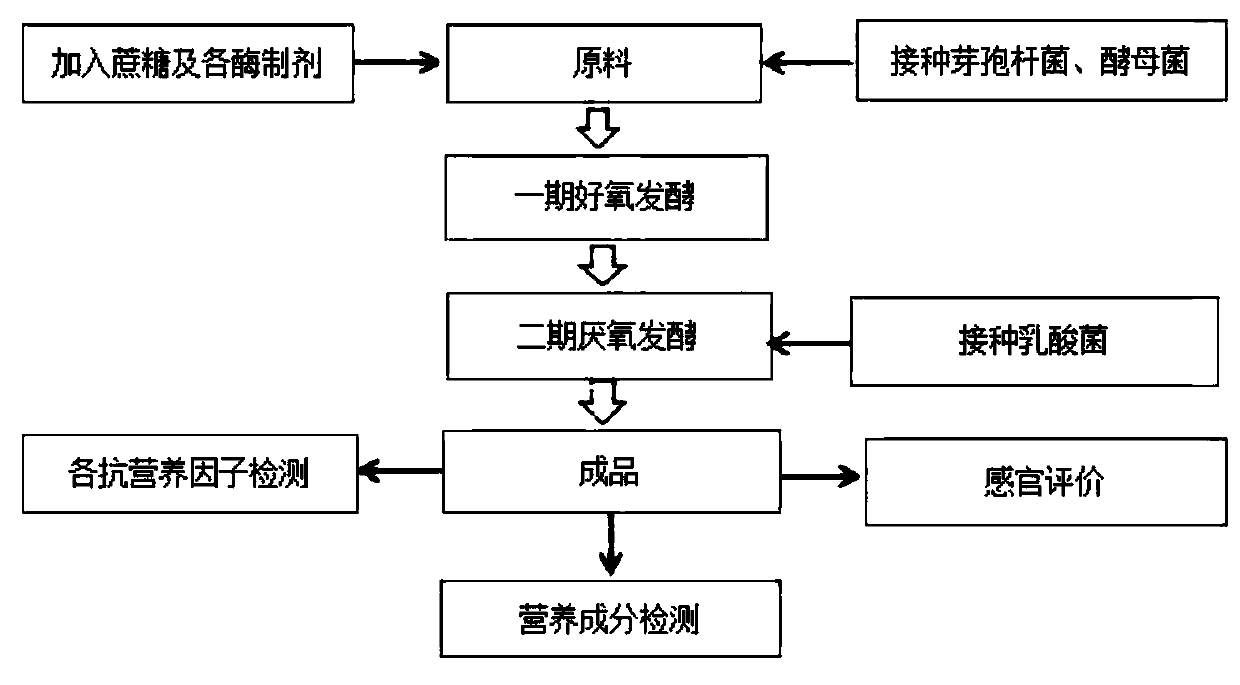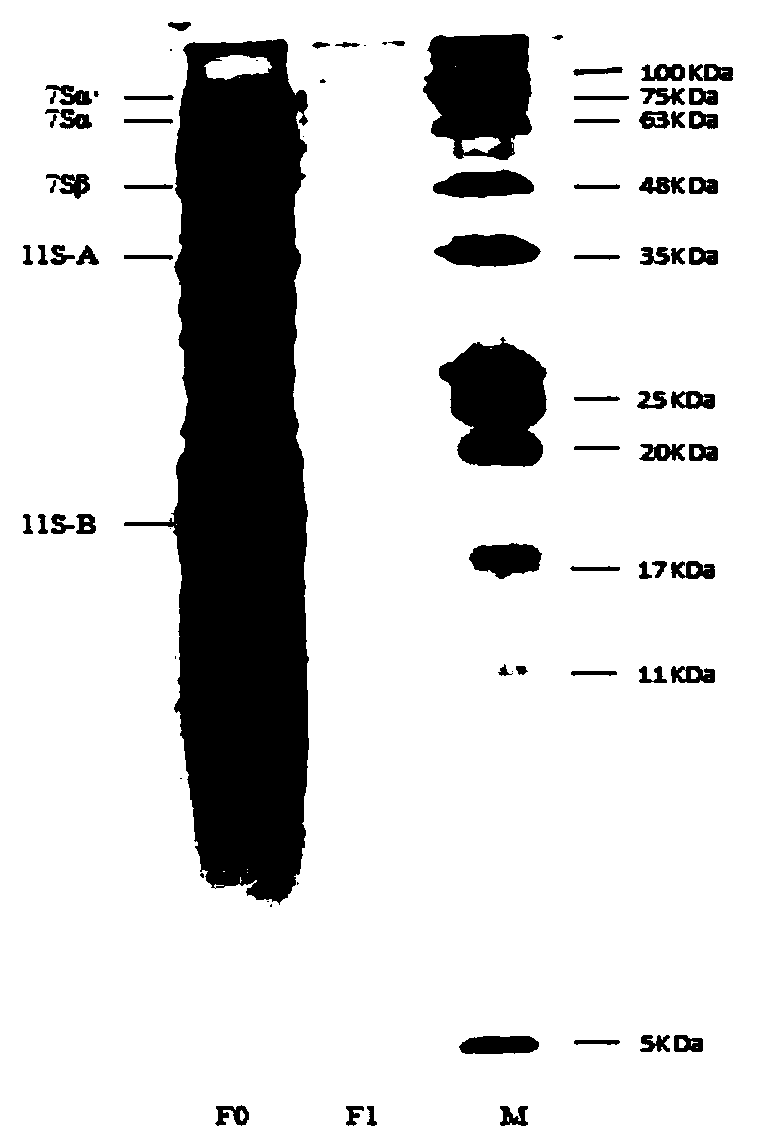High-efficiency and low-cost fermentation feed processing method based on bean dregs and application
A fermented feed and processing method technology, applied in the fields of application, animal feed, animal feed, etc., can solve the problems that the degradation effect of anti-nutritional factors cannot be known, the quality of fermented products cannot be guaranteed, and it is unfavorable for large-scale promotion and production. Achieve the effects of improving the body's immunity, improving lactation ability, and the method is simple and practical
- Summary
- Abstract
- Description
- Claims
- Application Information
AI Technical Summary
Problems solved by technology
Method used
Image
Examples
Embodiment 1
[0041] (1) Activation culture of bacillus, yeast and lactic acid bacteria:
[0042] A, first configure the culture medium of bacillus, saccharomyces and lactic acid bacteria;
[0043] Bacillus slant and plate medium: yeast extract 5g, sodium chloride 10g, peptone 10g, agar 15g, glucose 5g, distilled water 1L, pH natural, sterilized at 110°C for 30min; the composition of the Bacillus liquid seed medium is the same as that of the slant medium , the difference is that no agar is added.
[0044] Yeast slant and plate medium: 15g peptone, 10g yeast extract powder, 10g glucose, 20g agar, 1000mL distilled water, natural pH, sterilized at 110°C for 20min. The composition of the yeast liquid seed medium is the same as that of the slant medium, the difference is that no agar is added.
[0045] Lactic acid bacteria slant and plate medium: yeast extract 5g, sodium chloride 10g, peptone 10g, agar 20g, glucose 15g, distilled water 1L, pH natural. Sterilize at 110°C for 30 minutes; the co...
Embodiment 2
[0054] (1) the activation culture of bacillus, saccharomycete and lactic acid bacteria, concrete operation is with embodiment 1;
[0055] (2) Configure the first-stage aerobic fermentation medium, and the weight percentages of each component are respectively: bean dregs 79.89%; bran 20%; sucrose 0.01%; cellulase 0.02%, cellobiase 0.02%, glucose Amylase 0.01%; the total addition of mannanase, xylanase and β-glucanase 0.05%, mixed evenly to obtain the first-stage aerobic fermentation medium;
[0056] (3) Inoculate the Bacillus subtilis fermented seed liquid and the Candida utilis fermented seed liquid after the activation culture of step (1) into the first-stage aerobic fermentation medium, and the inoculum amount is the weight of the first-stage aerobic fermentation medium 12%, the total number of live bacteria of Bacillus subtilis and Candida utilis is 0.2×10 9 cfu / mL, the water content of the medium was adjusted to 35%, the fermentation temperature was 24°C, the aerobic ferm...
Embodiment 3
[0059] (1) the activation culture of bacillus, saccharomycete and lactic acid bacteria, concrete operation is with embodiment 1;
[0060] (2) Configure the first-stage aerobic fermentation medium, and the weight percentages of each component are: 40% bean dregs; 59.89% rice bran; 0.01% sucrose; 0.02% cellulase; 0.02% cellobiase; Enzyme 0.01%; total addition of mannanase, xylanase and β-glucanase 0.05%, mixed evenly to obtain aerobic fermentation medium;
[0061] (3) Inoculate the Bacillus licheniformis fermented seed liquid, Candida tropicalis fermented seed liquid, and Saccharomyces cerevisiae fermented seed liquid after step (1) activated culture into the first-stage aerobic fermentation medium, and the inoculation of the Bacillus licheniformis fermented seed liquid The amount is 0.1%, the total inoculation amount of Candida tropicalis fermented seed liquid and Saccharomyces cerevisiae fermented seed liquid is 0.1%, the inoculum mass ratio of Candida tropicalis fermented see...
PUM
 Login to View More
Login to View More Abstract
Description
Claims
Application Information
 Login to View More
Login to View More - R&D
- Intellectual Property
- Life Sciences
- Materials
- Tech Scout
- Unparalleled Data Quality
- Higher Quality Content
- 60% Fewer Hallucinations
Browse by: Latest US Patents, China's latest patents, Technical Efficacy Thesaurus, Application Domain, Technology Topic, Popular Technical Reports.
© 2025 PatSnap. All rights reserved.Legal|Privacy policy|Modern Slavery Act Transparency Statement|Sitemap|About US| Contact US: help@patsnap.com



